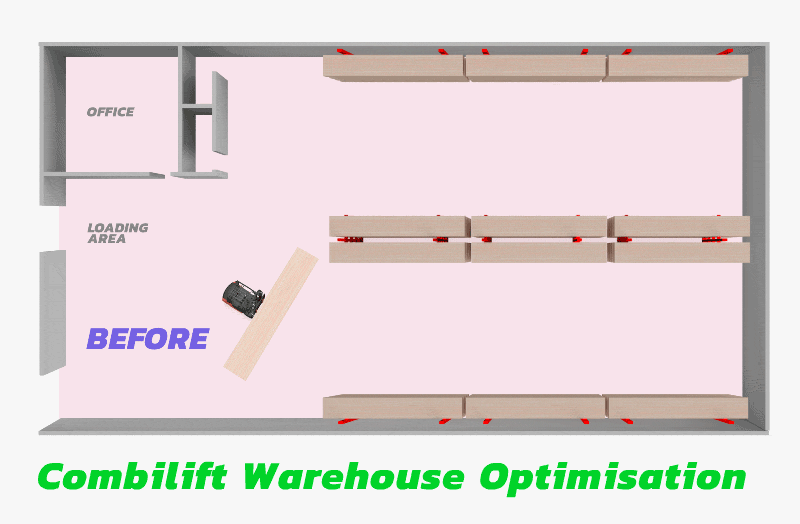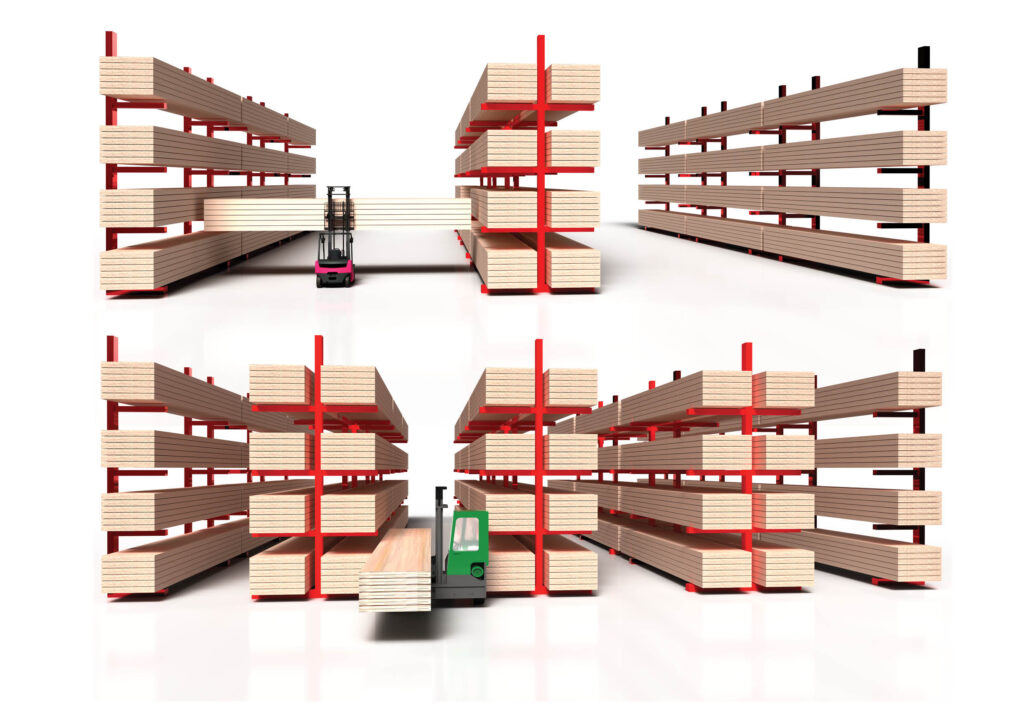When Beacon Building Products opened a location in Kaukauna, Wis., it wanted to ensure it could take full advantage of the warehouse space. However, awkward load bearing beams throughout the building were going to make it tough.
That’s when Beacon turned to forklift manufacturer Combilift to help think outside of the box – or rather, how to think differently about the box.
Beacon and Combilift have worked together in the past, so the roofing distributor hoped to use Comfilift’s expertise in maximizing warehouse space and layouts. Conor Trainor, corporate accounts manager at Combilift, spearheaded the effort.
“They had issues with columns in the building where they couldn’t get spacing done correctly using a regular forklift,” he said.
Combilift’s COMBi-CB multidirectional forklift, with its ability to drive sideways and its small footprint, means warehouses can be laid out differently than in the past with traditional forklifts. With every intent on using these forklifts at the Kaukauna branch, Beacon sent along blueprints to Combilift, which were then turned over to its engineering portal.
They proposed an interesting solution: rather than build around the columns, incorporate the pillars within the racks. When implemented, the layout went from the typical 16-foot aisle spacing to 11-foot 3-inch aisles that allows the branch to “hide” the columns, thereby increasing storage density. According to Trainor, the design exceeded expectations for Beacon’s pallet count by 80%.
“This is the first real case study scenario where we’re able to completely change the location layout to help them without having to worry about safety or columns, or having to change their whole structure,” Trainor said.
Narrow Aisles, Open Minds
There is one hitch with Combilift forklifts, which is that they often require a break-in period. First introduced in 2006, the Combi-CB operates like a normal forklift, but the compact trucks’ ability to move sideways means adjusting to a new way of driving and handling materials, whether it’s palletized or long loads.
“Once they get it, it changes their whole mindset, but it’s getting to that point,” Trainor said.
Matt Adams, branch manager for Beacon’s Kaukauna location, said the adjustment is worth the effort. He said his team found the forklifts relatively simple to operate thanks to the services Combilift’s offered.
“My team and I were able to catch on very quickly when it came to operating the machine,” he said. “Combilift also provided thorough training on the operation of the unit and walked us through daily preventative maintenance measures.”
When used properly, drivers can traverse narrow aisles and doorways as well as carry long loads of packages and materials with ease. Thanks to the optimized layout and the use of Combilift trucks, Adams said the Kaukauna branch is now able to house vinyl siding in a building that otherwise wouldn’t have stored the long products.

“It is allowing us to expand our reach in this market and provide contractors in the area with a wider variety of product selections when it comes to vinyl siding,” Adams said.
Inventory management is improved as well. According to a statement from Beacon, they turn inventory six times annually as opposed to nearly double that amount.
Aside from improving branch operations, roofing distributors can consider optimization versus finding new locations. Trainor points out that finding proper real estate for a roofing distribution branch requires effort and plenty of cash, whereas optimization uses the space a supplier already owns.
“It’s just the cultural mindset of ‘This is the way we’ve done it, and it’s worked, so let’s go find a bigger space,’” he said about buying new space versus optimization.
Combilift offers the warehouse optimization at no cost to its customers. Trainor said the typical process can last an average of three to six months, from visiting the site and engineering the plans to executing the new layout with the racking company and delivering any forklifts.
For other branches considering retooling their storage spaces, Adams said it has been a boon, but managers need to make sure there’s enough time for workers to adjust to a Combilift’s unique operations.
“This is a very effective way to increase warehouse capacity as well as improve material organization and order picking efficiency,” he said.
Original Article By Chris Gray for roofingsupplypro.com









